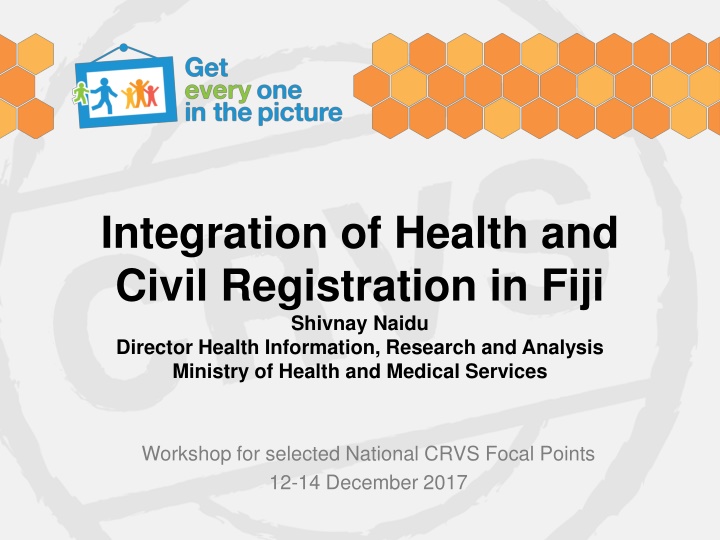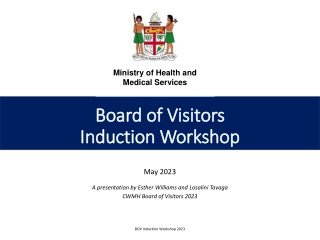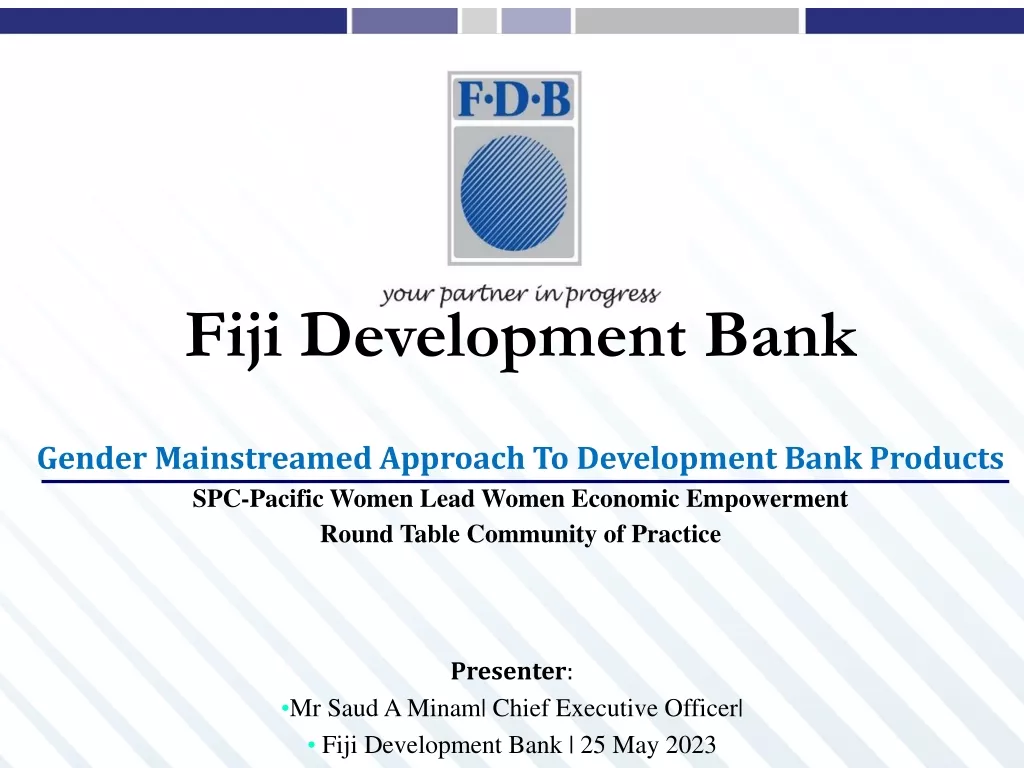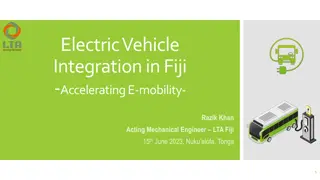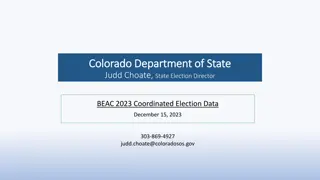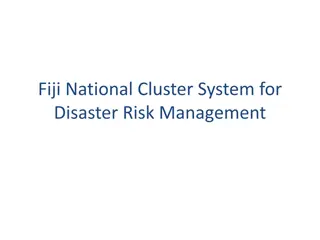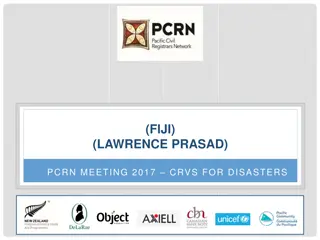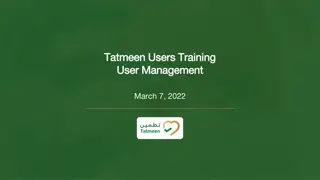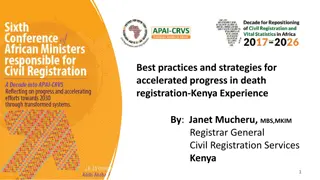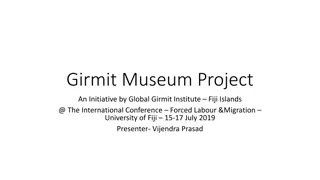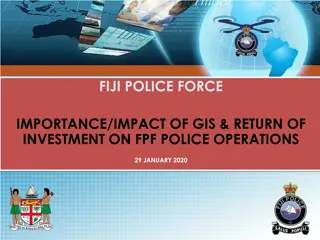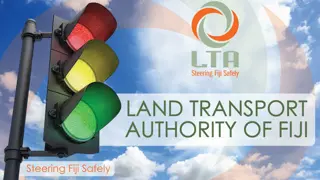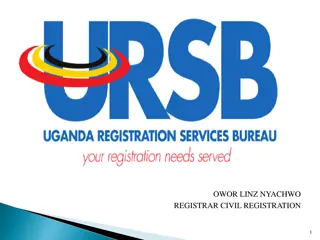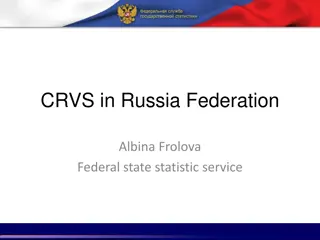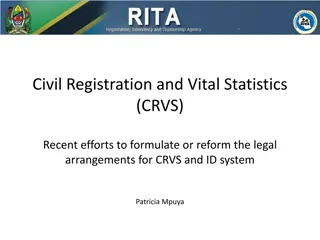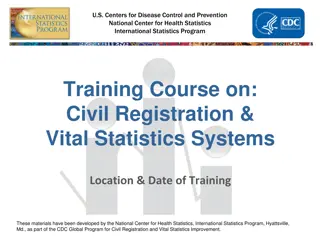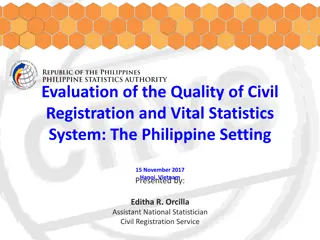Integration of Health and Civil Registration in Fiji
This workshop focused on the initiation, key stakeholders, technical skills required, obstacles faced, and the importance of integrating health and civil registration in Fiji to improve data quality and efficiency.
Download Presentation

Please find below an Image/Link to download the presentation.
The content on the website is provided AS IS for your information and personal use only. It may not be sold, licensed, or shared on other websites without obtaining consent from the author.If you encounter any issues during the download, it is possible that the publisher has removed the file from their server.
You are allowed to download the files provided on this website for personal or commercial use, subject to the condition that they are used lawfully. All files are the property of their respective owners.
The content on the website is provided AS IS for your information and personal use only. It may not be sold, licensed, or shared on other websites without obtaining consent from the author.
E N D
Presentation Transcript
Integration of Health and Civil Registration in Fiji Shivnay Naidu Director Health Information, Research and Analysis Ministry of Health and Medical Services Workshop for selected National CRVS Focal Points 12-14 December 2017
Why the integration of health and civil registration were initiated? National CRVS Committee TOR Data Dependencies and Gaps Health (data sources for births, deaths and causes of death) Registrar General (registration of birth, deaths and marriages) Bureau of Statistics (national publication of vital statistics)
Who were the key stakeholders involved? Health Team (IT and HIU) Registrar General Bureau of Statistics National ITC Services (management of BDM Registration System)
What were the technical skills needed for this to happen? Policy and Standard Operating Procedure Enforcement of legislation (BDM Act, Inquest Act and PH Act) Initial findings (Health willing to share its data to all agencies) Other skills/support: Leadership and Governance Process mapping for standardisation Identification and reporting of event Capture of event (standardised manual forms and electronic in HIS) Registration of event electronically Regular data extraction and comparison Targeted awareness and registration Improvements in data quality through training
What were the technical skills needed for this to happen? Technology Infrastructure (hardware, network, software) Database skills (management, scripting, extraction, analysis, performance improvement) Data comparison (cleaning, analysis, update of systems, validation) Capacity Building Training (Doctors MCDC, ICD10, IRIS, Application Use Training) Publication and awareness material development in three languages Monitoring, Evaluation, Learning -> Continuous Improvement -> Closing the M&E Loop
What were the obstacles? Approval process for data access and release Technical skills and capabilities Right mindset of people in the team willing to make a difference Resource allocations (Budget, HR, Technology) Staff transfers/attrition
What were the benefits? Leadership support, advocacy for HIS and CRVS Improvement in coordination and communication amongst stakeholders Improvement in registration practices Improvement in ICD compliance and Health Information (births, deaths, causes of death, training) Improvement in data quality, dissemination, use and accessibility
Death Data Coding in IRIS flow diagram Causes of Death and Underlying Cause of Death is uploaded back into PATIS Death data extracted from PATIS and uploaded into IRIS Causes of death are coded and underlying cause of death is assigned Rejects are coded manually and IRIS dictionary updated Death data entered into PATIS from MCDC Coded death data shared with RG electronically every month
What were the lessons learned? 1. Ensure country ownership of the strengthening process of civil registration and vital statistics (CRVS). Engage stakeholders and establish a CRVS committee (collaborate, communicate and document processes; ensure strong leadership and senior management support). Establish guidelines and processes for sharing data and knowledge between agencies and ensure this sharing occurs. Strengthen technical elements of the CRVS system alongside broader systemic issues (e.g. staff training/capacity building, standardized processes). Investment into innovative technology solution for sustainable and long term benefits Advocate and increase awareness of the importance of CRVS systems and the relevance and application of the vital statistics they produce. Ensure the information produced by CRVS systems is used for policymaking. Monitor and evaluate activities that strengthen CRVS in order to manage constraints and identify opportunities for progressing the activities in the CRVS Strategic Plan. 2. 3. 4. 5. 6. 7. 8.
Any plans for further integration in the area of CRVS in Fiji? Mobile Platforms(mHealth, mRegistration) Establishment of National ID system. Access to clinical records at bedside and also ubiquitous access within Fiji. Integrated database between health and registration office. Access to electronic medical records to Public for managing their own health.
